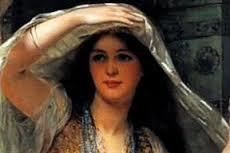Tenure 1362 – 1383 | Predecessor New title Issue Murad ISüleyman Paşa Spouse Orhan (m. 1299) | |
 | ||
Father Porphyrogennetos of Yahisar Religion Islam,previously Orthodox Christian Children Murad I, Süleyman Pasha, Kasim Places of burial Muradiye Mosque, Manisa, Turkey, Bursa, Turkey Grandchildren Bayezid I, Savcı Bey, Yakub Çelebi, Nefise Hatun, Sultan, Ibrahim bey, Yahşi Bey, Halil Bey Similar Orhan, Murad I, Malhun Hatun, Bayezid I, Asporça Hatun | ||
Who is nil fer hatun
Nilüfer Hatun (Ottoman Turkish: نیلوفر خاتون, birth name Holifere (Holophira) / Olivera, other names Bayalun, Beylun, Beyalun, Bilun, Suyun, Suylun) was a Valide Hatun; the wife of Orhan, the second Ottoman Sultan. She was mother of the next sultan, Murad I. Her other son was Kasim (died 1346). Some older sources also claim she was mother of Orhan's first son, Suleyman Pasha, which is disputed.
Contents
Biography
The traditional stories about her origin, traced back to the 15th century, are that she was daughter of the Byzantine ruler (tekfur) of Bilecik, called Holofira. As some stories go, Orhan's father Osman raided Bilecik at the time of Holofira's wedding arriving there with rich presents and disguised and hidden soldiers. Holofira was among the loot and given to Orhan.
However modern researchers doubt this story, admitting that it may have been based on real events. Doubts are based on various secondary evidence and lack of direct documentary evidence of the time. In particular, her Ottoman name Nilüfer meaning water lily in Persian language.
Other Historians make her a daughter of the Prince of Yarhisar or a Byzantine Princess Helen (Nilüfer), who was of ethnic Greek descent.
According to a source, in the spring of 1299, the Bilecik magistrate who was to marry the daughter of Yarhisar invited Osman Ghazi and his men to his wedding festivity. In the spring the Söğüt people migrated to Dominic plateau until autumn. Osman Ghazi asked to leave all his belongings at the Bilecik castle before coming to the wedding. It was the usual practice in those years to entrust the heavy goods of encampment to neighbouring castles. The magistrate accepted gladly. The wedding would be in Chakirpinar, two hours away from Bilecik. On the way to the wedding, the magistrate of Yarhisar was encircled by Osman's soldiers. They turned back toward Yarhisar. When the people saw their magistrate, they opened the gates and Osman's soldiers got in. The conquest of the castle did not take long. At the Bilecik castle, one of the bales left by Osman Ghazi was opened. A soldier got out of it and informed others. Armed soldiers stepping out of the bales captured everyone in the castle. Bilecik had fallen to the Ottomans. While the guests were waiting for the bride, the horsemen of the Ottomans appeared. There was a big ceremony in Karacahisar. Orhan Ghazi would marry Holofira, the daughter of the Yarhisar magistrate. The young bride converted to Islam and became Nilüfer Hatun.
When Orhan Ghazi was off on campaign Nilüfer stayed in the Palace and informed her son about events in the palace. During Murad's reign she was recognized as Valide Hatun, title for living mother of reigning Ottoman Sultan that time, the first in Ottoman history to hold this title, and when she died, she was buried along Orhan Ghazi and his father Osman Ghazi in Bursa. The Muslim traveler Ibn Battuta who visited İznik in the 1330s, was a guest of Nilüfer Hatun, whom he describes as a 'pious and excellent woman.'
Nilüfer Hatun Imareti ("Nilüfer Hatun Soup Kitchen"), a convent annex hospice for dervishes, now housing the Iznik Museum in İznik, Bursa Province, was built by Sultan Murad in 1388 to honor his mother after her death.
